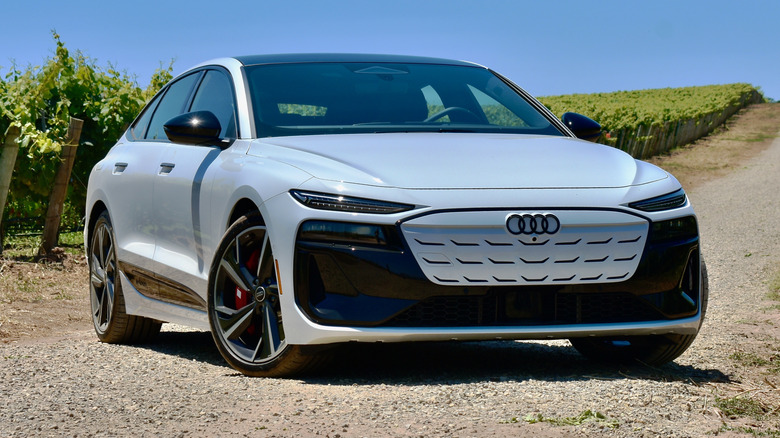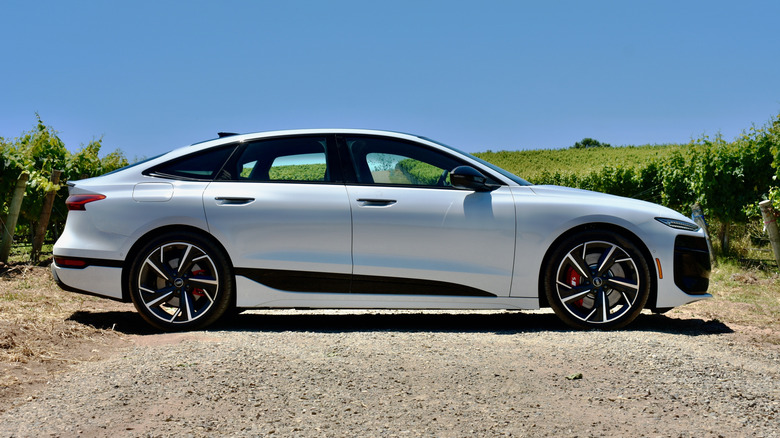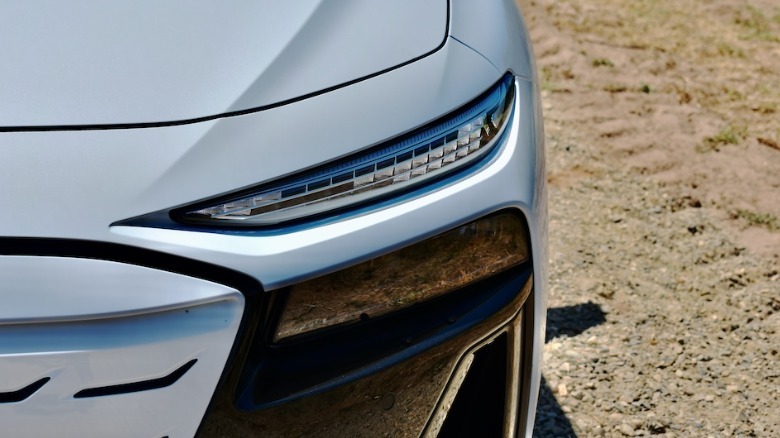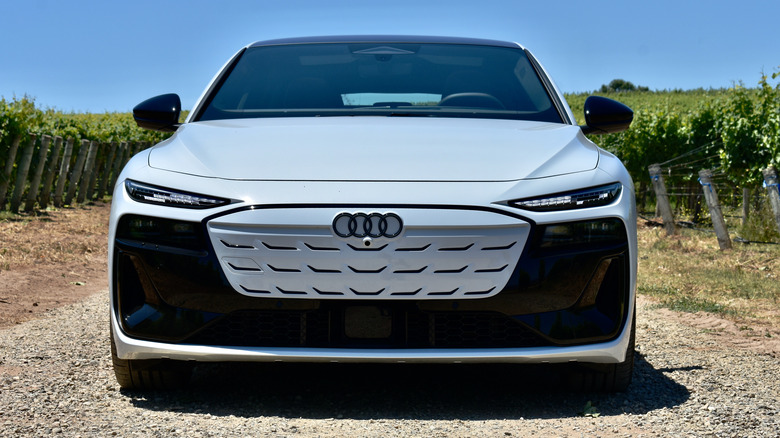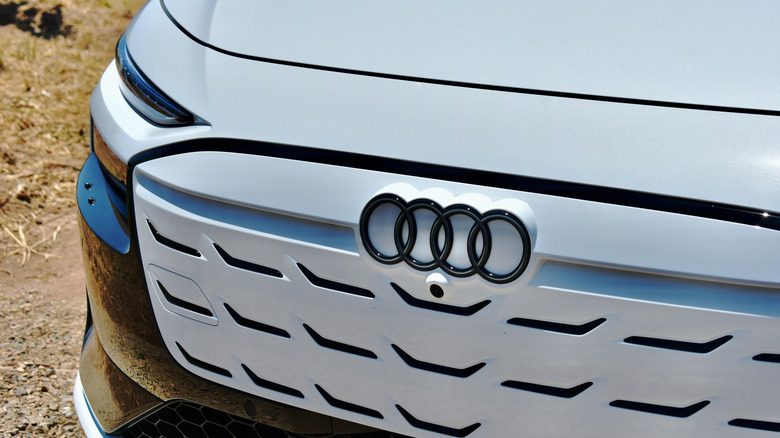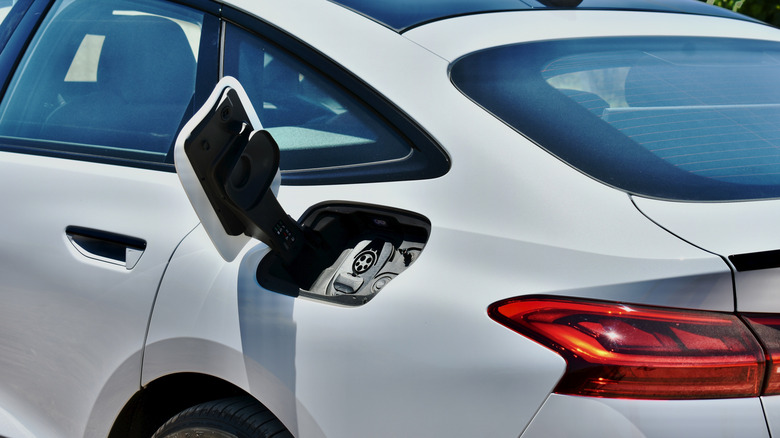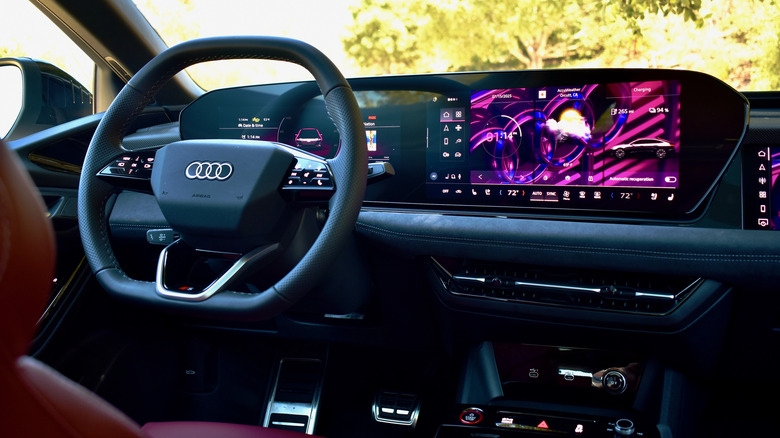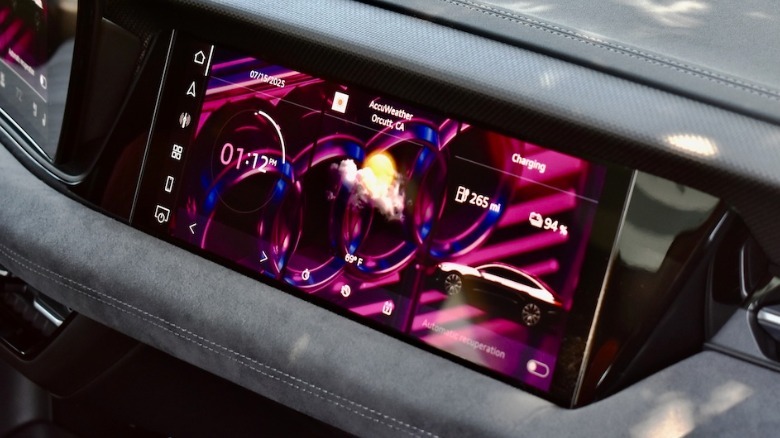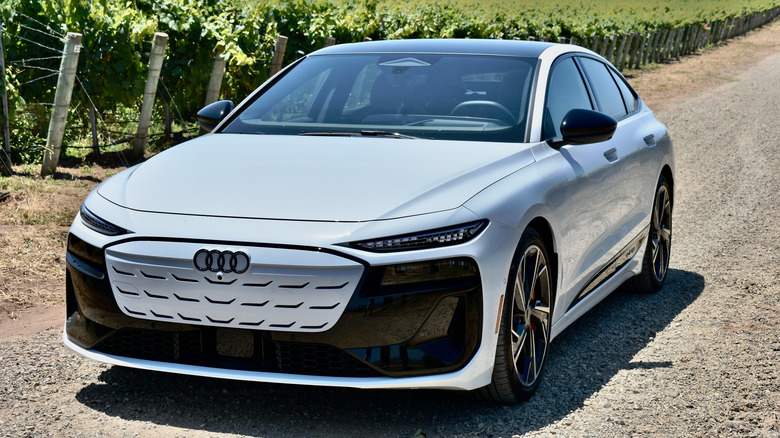2026 Audi A6 E-Tron First Drive: There's More To A Good EV Beyond Range And Price
The next phase of Audi's electrification is well underway. After launching a range of electric vehicles based on a mosaic of platforms, the automaker is consolidating things around the Premium Platform Electric (PPE) co-developed with Porsche, which aims for big improvements in efficiency and charging performance, while incorporating updated tech features shared with gasoline models based on its Premium Platform Combustion (PPC) counterpart.
The Audi Q6 e-tron and Porsche Macan debuted PPE, but the 2025 Audi A6 e-tron expands use of it beyond SUVs. It features the same hardware, but in a sleeker fastback sedan body style that Audi calls a "Sportback." This EV was intended to replace the gasoline Audi A6, electrifying one of the automaker's longest-running nameplates, but negative customer feedback prompted Audi to reverse itself, so a new internal-combustion model that would have previously been an Audi A7 will now be badged as an A6 as well.
A new take on electric-sedan styling
Different automakers have their own answer to the question of whether to give an electric car traditional styling, or to do something radical in order to maximize aerodynamic efficiency and boost range. The A6 e-tron's competitive set includes examples of the former (BMW i5) and the latter (Lucid Air, Mercedes-Benz EQE sedan), while the Audi itself lands somewhere in the middle.
The A6 e-tron has the visual weight of a traditional German luxury sedan. It rides fairly low to the ground, and its windshield and rear window are laid back at extreme angles in proper wind-cheating fashion, but the body itself has a lot of girth. That makes room for an intimidating front end comprised of a large grille flanked by stacked lights (rectangular bricks for the headlights, delicate blades for the daytime running lights), but makes the back look ungainly, as the interestingly-shaped taillights look out of scale. Audi tries to visually shrink surfaces with contrasting trim, but that just makes everything look cluttered.
Regardless, Audi's designers and engineers achieved good results. Even without the slimmer camera mirrors available in other markets, Audi claims a drag coefficient of 0.23 for the U.S. spec—nearly the same as the more radical EQE. That's thanks to numerous details like an enclosed underbody, front air curtains, aerodynamic wheels, and a ducted cooling system in place of conventional radiators.
Hidden hatchback practicality
Making the A6 e-tron into a "Sportback," with a rear hatch instead of a trunk, contributed to its aerodynamic efficiency as well—with added practicality as a bonus.
Audi lists 25.9 cubic feet of cargo space behind the rear seats, which is more than twice the 10.9 cubic feet you get in an EQE and appreciably more than the 17.9 cubic feet of a BMW i5 or 22.1 cubic feet of a Lucid Air. The hatch also makes accessing that cargo space easier, thanks to a larger aperture. Many conventional sedans offer folding rear seats, but the A6 e-tron's hatch means that extra space (39.8 cubic feet in this case) isn't necessarily limited to long-but-thin items.
However, like most established automakers, Audi hasn't fully embraced the frunk. It made room for a small compartment that looks suitable for storing charging cables or other small items, but it's nowhere near the 10 cubic feet you get from the under-hood storage of a Lucid Air. And unlike the gasoline A6, which is still available in Allroad wagon spec in the United States, you have to move to Europe to get an A6 e-tron Avant wagon.
Regarding passenger space, the A6 e-tron gives up a bit of rear-seat legroom compared to the Air and EQE, while the steeply-raked windshield impedes headroom a bit. But it's not the best example of efficient EV packaging, as the current gasoline A6 sedan actually has a bit more second-row headroom and legroom than the e-tron.
Quick acceleration, but chassis prefers a slower pace
Entry-level models have a single-motor, rear-wheel drive powertrain, making the A6 e-tron the first two-wheel drive Audi sold in the U.S. since 2009 (and that one was front-wheel drive). The rear-mounted motor generates 362 horsepower. That can be temporarily boosted to 375 hp with launch control, getting the single-motor A6 e-tron from 0 to 60 mph in 5.2 seconds, according to Audi.
A dual-motor, all-wheel drive A6 e-tron Quattro is also available, with 422 hp in its default state and 456 hp with launch control, which enables an estimated 4.3-second 0 to 60 mph time. Both versions are electronically limited to 130 mph, and use a 100-kilowatt-hour battery pack with 94.4 kWh of usable capacity. Audi only had an all-wheel drive model on hand for this first drive, equipped with optional air suspension.
There's always an expectation that a sedan from one of the prestige German brands will be sporty. What really impressed here was the suspension's compliance and ability to soak up bumps without causing the entire car to flop around like an old Cadillac, as well as the many choices for regenerative braking level (all the way from coasting to one-pedal driving). That made for a pleasant driving experience as long as the A6 e-tron wasn't hustled too much. It's still a big car, after all, and became more of a handful when pushed harder.
S is for subtle
Mirroring the sedan's Q6 e-tron platform-mate, Audi is also bringing out a more powerful S6 e-tron alongside the standard A6 e-tron. It's still a dual-motor, all-wheel drive car with the same battery pack, but output increases to 496 hp (543 hp with launch control). Audi says it will do zero to 60 mph in 3.7 seconds, which is quicker than the BMW i5 M60 and Mercedes-AMG EQE diet performance models with which it most directly competes. Audi also raises the top speed to 149 mph and gives the air suspension a sportier tune, but there's little to visually distinguish the S6 from the A6 e-tron.
There's also little to distinguish the driving experience from the all-wheel drive A6 e-tron. The S6 felt a bit quicker, but the A6 e-tron was already plenty quick to begin with. When it comes to handling, the two models will be virtually indistinguishable to the average driver. Audi did a good enough job on the base car that it's hard to see the point of trading up.
Dynamically, the main issue with both the S6 e-tron and the A6 e-tron was the steering. Audi prioritized high-speed stability, and that came at the expense of precision and responsiveness off the highway. That's remarkable considering that Audi hard-mounted the front subframe and steering rack, which should transmit more feedback through the wheel. It was hard to tell what the front wheels were doing in corners, a problem that didn't improve in the S6.
Standout range and efficiency
The engineering improvements of the PPE architecture really come into focus when looking at range and charging. Audi estimates up to 392 miles of range for single-motor models, assuming you trade the standard 20-inch wheels for the 19-inch wheels available as part of the optional Ultra Package. That gives Audi bragging rights over its traditional rivals, as the BMW i5 and Mercedes EQE sedan can only manage 295 miles and 308 miles in their longest-range configurations, respectively. But the single-motor Lucid Air Pure still offers 420 miles of range.
Even all-wheel drive models offer more range than the rear-wheel drive BMW and Mercedes, at 377 miles for the A6 e-tron Quattro (again, on optional 19-inch wheels) and 324 miles for the S6 e-tron on its standard 20-inch wheels.
PPE also incorporates an 800-volt electrical architecture, allowing for DC fast charging at up to 270 kilowatts. That's enough to complete a 10%-80% charge in 21 minutes, according to Audi. For 2025, the A6 e-tron ships with a Combined Charging Standard (CCS) connector, but can charge at Tesla Supercharger stations with a North American Charging Standard (NACS) adapter.
A 9.6-kW onboard charger can complete a Level 2 AC charge in 11.5 hours, Audi estimates. That's reasonable given the size of the battery pack, and should still comfortably accommodate overnight home charging.
All the world's a (digital) stage
The A6 e-tron carries over the "Digital Stage" interface from the Q6 e-tron and Audi's latest gasoline cars. A curved display consisting of an 11.9-inch digital instrument cluster and 14.5-inch touchscreen is standard, while a 10.9-inch front-passenger touchscreen is optional. The operating system is Android-based, but standalone Apple CarPlay and Android Auto are supported.
The infotainment system works quite well for the driver, as the screens are optimally placed for use with minimal distraction (although you can't get a map view in the instrument cluster), and Audi's latest voice recognition system generally performs well. But the big central touchscreen is tilted away from the front passenger, so they're left with the small dedicated screen or, on lower trim levels, nothing at all.
Additional driver-centric tech features include an available head-up display that can show navigation arrows and can highlight lane markings should you drift too far to one side, and a 20-speaker Bang & Olufsen audio system with headrest speakers that can relay directions or phone calls without disrupting passengers' listening. The driver also gets a door-mounted control pad for locks, windows, and mirror adjustments that looks like a television remote control.
While it put a lot of effort into the tech, Audi should have paid more attention to the rest of the interior. Materials had a cheap, tinny feel unworthy of a luxury sedan, and designers' efforts to put the various screens and controls within reach created a discordant mess of shapes.
2026 Audi A6 e-tron Verdict
Pricing is reasonable compared to rivals. The base single-motor Premium model starts at $67,195. That's about the same as the starting price of a BMW i5, a couple grand less than that of a Lucid Air, and much less than a Mercedes EQE sedan. A Premium Plus trim level adds the fancier Bang & Olufsen audio system for an additional $3,900, while the top Prestige trim includes air suspension, soft-close doors, and the 10.9-inch passenger touchscreen for $6,300.
The Ultra Package that includes the smaller, range-enhancing wheels costs $800, while all-wheel drive is an additional $2,000. The S6 e-tron starts at $79,995—less than sportier versions of the other German electric sedans, but still a questionable investment given the minimal differentiation from the lower-tier A6 e-tron models.
Audi's latest e-tron EV is an evolutionary step in the right direction. The automaker has put together a good component set, but still needs to figure out how to get the most out of it. Infotainment tech, range, and charging keep pace with rivals, but don't set new standards. And in its enthusiasm for getting the EV qualities right, Audi seems to have forgotten the rest of the car. Interior materials are a regression for the brand, and the driving experience is pleasant but anonymous. But addressing those issues will require reorientation, not reinvention, so the lion's share of the work is done.
